
Handbuch Technischer Lawinenschutz By
2011 | 479 Pages | ISBN: 3433029474 | PDF | 9 MB
This book provides an overview of the fundamentals and classification of technical avalanche protection. It describes in detail the design, construction and maintenance of protection structures as well as temporary technical measures.Content: Chapter 1 Einfuhrung (pages 1-11): DI Siegfried Sauermoser and DI Dr. Florian Rudolf?MiklauChapter 2 Entwicklung der Lawinen und des Lawinenschutzes: Historischer Uberblick (pages 13-20): DI Siegfried Sauermoser, Dr. Markus Stoffel and Dipl. Bauing. ETH Stefan MargrethChapter 3 Lawinen: Entstehung und Wirkung (pages 21-62): DI Patrick Nairz, DI Siegfried Sauermoser, Dr. Karl Kleemayer, Dr. Karl Gabl, Dr. Markus Stoffel and Dipl. Bauing. ETH Stefan MargrethChapter 4 Grundlagen und Modelle der Lawinendynamik und Lawinenwirkung (pages 63-101): DI Siegfried Sauermoser, DI Matthias Granig, Dr. Karl Kleemayr and Dipl. Bauing. ETH Stefan MargrethChapter 5 Analyse, Bewertung und planliche Darstellung von Lawinengefahren (?risiken) (pages 103-128): DI Christoph Skolaut, DI Dr. Florian Rudolf?Miklau and Dr. Markus StoffelChapter 6 Planung von permanenten technischen Lawinenschutzma?nahmen (pages 129-158): DI Dr. Florian Rudolf?Miklau and DI Siegfried SauermoserChapter 7 Permanenter technischer Lawinenschutz: Schutzsysteme und Bautypen (pages 159-205): DI Wolfgang Schilcher, Dipl. Bauing. ETH Stefan Margreth, DI Siegfried Sauermoser, DI Christoph Skolaut, Mag. Michael Molk and DI Dr. Florian Rudolf?MiklauChapter 8 Permanenter Technischer Lawinenschutz: Bemessung und Konstruktion (pages 207-293): Dipl. Bauing. ETH Stefan Margreth, DDI. Dr. Jurgen Suda, Dr. Robert Hofmann, Dr. Peter Gauer, DI Siegfried Sauermoser, DI Wolfgang Schilcher and DI Christoph SkolautChapter 9 Bauausfuhrung und Erhaltungsmanagement (pages 295-362): DI Dr. Florian Rudolf?Miklau, DI. Wolfgang Schilcher, Dipl. Bauing. ETH Stefan Margreth, DI. Gebhard Walter and DDI. Dr. Jurgen SudaChapter 10 Gebaude? und Objektschutz (pages 363-377): DDI. Dr. Jurgen Suda, DI Siegfried Sauermoser, DI Christoph Skolaut and DI Dr. Florian Rudolf?MiklauChapter 11 Temporarer Lawinenschutz (pages 379-394): Dipl. Bauing. ETH Lukas Stoffel, DI Patrick Nairz and DI Siegfried SauermoserChapter 12 Lawinenbeobachtung (Monitoring) und Ereignisdokumentation (pages 395-408): Dr. Karl Kleemayr, DI. Patrick Nairz, DI Dr. Florian Rudolf?Miklau and Dr. Karl GablChapter 13 Technischer Lawinenschutz international: Zahlen und Fakten (pages 409-432): DI Dr. Florian Rudolf?Miklau, Dipl. Bauing. ETH Stefan Margreth, Francois Rapin, Bernhard Zenke, Yasuo Ishii, Rudolf Pollinger, Krister Kristensen, Tomas Johannesson, Pere Oller, Art Mears and Chris StethamChapter 14 Zusammenfassung und Ausblick (pages 433-434): DI Siegfried Sauermoser and DI Dr. Florian Rudolf?Miklau
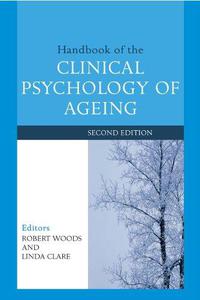
Handbook of the Clinical Psychology of Ageing By Robert Woods, Linda Clare (eds.)
2008 | 626 Pages | ISBN: 0470012307 | PDF | 9 MB
The first authoritative reference on clinical psychology and aging, the Handbook of the Clinical Psychology of Ageing was universally regarded as a landmark publication when it was first published in 1996. Fully revised and updated, the Second Edition retains the breadth of coverage of the original, providing a complete and balanced picture of all areas of clinical research and practice with older people. Contributions from the UK, North America, Scandinavia and Australiaprovide a broad overview of the psychology of aging, psychological problems (including depression, anxiety, psychosis, and dementia), the current social service context, and assessment and intervention techniques.Content: Chapter 1 Introduction (pages 1-14): Bob WoodsChapter 2 Ageing and Adaptation (pages 15-32): Peter G. Coleman and Ann O'HanlonChapter 3 Memory and Cognition in Ageing (pages 33-55): Boo JohanssonChapter 4 Ageing and Physical Health (pages 57-74): Valerie MorrisonChapter 5 Death, Dying and Bereavement (pages 75-94): Jan R. OyebodeChapter 6 Manifestations of Depression and Anxiety in Older Adults (pages 95-110): Inger Hilde NordhusChapter 7 Suicide and Attempted Suicide in Later Life (pages 111-119): Bob WoodsChapter 8 Psychological Trauma in Late Life: Conceptualization, Assessment and Treatment (pages 121-131): Steve DaviesChapter 9 Late Onset Psychosis (pages 133-143): Dr Linda Clare and Sharon GiblinChapter 10 Dementia as a Biopsychosocial Condition: Implications for Practice and Research (pages 145-159): Murna Downs, Dr Linda Clare and Elizabeth AndersonChapter 11 The Neuropsychology of Dementia: Alzheimer's Disease and other Neurodegenerative Disorders (pages 161-184): Robin G. MorrisChapter 12 Parkinson's Disease (pages 187-199): Peter HobsonChapter 13 Stroke (pages 201-217): Janet CockburnChapter 14 Sleep and Insomnia in Later Life (pages 219-233): Kevin MorganChapter 15 Values and Diversity in Working with Older People (pages 235-253): Kate AllanChapter 16 Family Caregiving: Research and Clinical Intervention 255 (pages 255-288): Steven H. Zarit and Anne B. EdwardsChapter 17 Residential Care (pages 289-309): Bob WoodsChapter 18 Elder Abuse and Neglect (pages 311-322): Alice Campbell Reay and Kevin D. BrowneChapter 19 Primary Care Psychology and Older People (pages 323-339): Gita E. BhutaniChapter 20 Ageing, Dementia and People with Intellectual Disability (pages 341-349): Chris Oliver, Dawn Adams and Sunny KalsyChapter 21 Palliative Care for People with Dementia: Principles, Practice and Implications (pages 351-359): Katherine Froggatt, Murna Downs and Neil SmallChapter 22 Neuropsychological Assessment of the Older Person (pages 361-383): Dr Linda ClareChapter 23 Assessing Function, Behaviour and Need (pages 385-414): Adrienne Little and Breid DohertyChapter 24 Assessing Mood, Wellbeing and Quality of Life (pages 415-427): Bob WoodsChapter 25 Capacity and Consent: Empowering and Protecting Vulnerable Older People (pages 429-436): Charles TwiningChapter 26 The Socio?Cultural Context in Understanding Older Adults: Contextual Adult Lifespan Theory for Adapting Psychotherapy (pages 437-456): Bob G. Knight and Cecilia PoonChapter 27 Cognitive Behaviour Therapy with Older People (pages 457-472): Ken LaidlawChapter 28 Psychoanalysis and Old Age (pages 473-487): Rachael DavenhillChapter 29 Systemic Interventions and Older People (pages 489-504): Alison Roper?HallChapter 30 Neuropsychological Rehabilitation in Later Life: Special Considerations, Contributions and Future Directions (pages 505-522): Margaret CrossleyChapter 31 Psychological Interventions with People with Dementia (pages 523-548): Bob Woods and Dr Linda ClareChapter 32 Interventions for Family Caregivers of People with Dementia (pages 549-569): Henry Brodaty and Karen BermanChapter 33 Challenging Behaviour in Dementia: A Psychosocial Approach to Intervention (pages 571-594): Mike Bird and Esme Moniz?CookChapter 34 Interventions at the Care Team Level (pages 595-611): Dawn Brooker
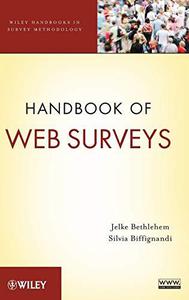
Handbook of Web Surveys By Jelke Bethlehem, Silvia Biffignandi(auth.)
2011 | 474 Pages | ISBN: 0470603569 | PDF | 9 MB
BEST PRACTICES TO CREATE AND IMPLEMENTHIGHLY EFFECTIVE WEB SURVEYS Exclusively combining design and sampling issues, Handbook of Web Surveys presents a theoretical yet practical approach to creating and conducting web surveys. From the history of web surveys to various modes of data collection to tips for detecting error, this book thoroughly introduces readers to the this cutting-edge technique and offers tips for creating successful web surveys. The authors provide a history of web surveys and go on to explore the advantages and disadvantages of this mode of data collection. Common challenges involving under-coverage, self-selection, and measurement errors are discussed as well as topics including: Sampling designs and estimation procedures Comparing web surveys to face-to-face, telephone, and mail surveys Errors in web surveys Mixed-mode surveys Weighting techniques including post-stratification, generalized regression estimation, and raking ratio estimation Use of propensity scores to correct bias Web panels Real-world examples illustrate the discussed concepts, methods, and techniques, with related data freely available on the book's Website. Handbook of Web Surveys is an essential reference for researchers in the fields of government, business, economics, and the social sciences who utilize technology to gather, analyze, and draw results from data. It is also a suitable supplement for survey methods courses at the upper-undergraduate and graduate levels.Content: Chapter One The Road to Web Surveys (pages 1-36): Chapter Two About Web Surveys (pages 37-58): Chapter Three Sampling for Web Surveys (pages 59-95): Chapter Four Errors in Web Surveys (pages 97-146): Chapter Five Web Surveys and Other Modes of Data Collection (pages 147-188): Chapter Six Designing a Web Survey Questionnaire (pages 189-234): Chapter Seven Mixed?Mode Surveys (pages 235-280): Chapter Eight The Problem of Undercoverage (pages 281-302): Chapter Nine The Problem of Self?Selection (pages 303-327): Chapter Ten Weighting Adjustment Techniques (pages 329-384): Chapter Eleven Use of Response Propensities (pages 385-418): Chapter Twelve Web Panels (pages 419-457):

Handbook of Sports Medicine and Science: Sports Therapy Services: Organization and Operations By
2012 | 133 Pages | ISBN: 1118275772 | PDF | 3 MB
Handbook of Sports Therapy Services: Organization and Operations is a practical guide, appropriate for each member of the multi-disciplinary "Sports Therapy" team, to establishing and effectively delivering the diverse therapy services required for athletes at international, national, and regional sporting events.Content: Chapter 1 Sports therapy-Who? What? When? Where? Why? and How? (pages 1-8): James E. Zachazewski and David J. MageeChapter 2 A history of sports medicine and sports therapy (pages 9-18): James E. Zachazewski, Arthur J. Boland and Nicola PhillipsChapter 3 The role and importance of the sports therapist: pre?event, event, and post?event (pages 19-24): Suzanne Werner, Peter Drugge, Tommy Eriksson, Asa Lonnqvist, Ulrika Tranaeus and Lotta WillbergChapter 4 Hosting international Olympic events: providing host therapy services at major games (pages 25-40): Randy GoodmanChapter 5 Pre?Olympic team travel: logistical and treatment considerations (pages 41-47): Masaki Katayose and David J. MageeChapter 6 Olympic event: logistical and treatment considerations (pages 48-67): Nicola Phillips and Caryl BeckerChapter 7 The importance of communication: understanding the importance of the event to the athlete, coach, and others (pages 68-78): Bill Moreau and Peter TooheyChapter 8 Considerations for working with professional athletes versus nonprofessional amateur athletes during Olympic events (pages 79-90): Sergio T. Fonseca, Juliana Melo Ocarino, Thales Rezende Souza, Anderson Aurelio da Silva, Jose Roberto Prado, Natalia Franco Netto Bittencourt and Luciana De Michelis MendoncaChapter 9 To compete or not to compete following injury during Olympic events (pages 91-102): Tony WardChapter 10 Sports nutrition and therapy (pages 103-116): Louise Burke and Ron Maughan

Handbook of Seafood Quality, Safety and Health Applications By
2010 | 570 Pages | ISBN: 1405180706 | PDF | 18 MB
The global market for seafood products continues to increase year by year. Food safety considerations are as crucial as ever in this sector, and higher standards of quality are demanded even as products are shipped greater distances around the world. The current global focus on the connection between diet and health drives growth in the industry and offers commercial opportunities on a number of fronts. There is great interest in the beneficial effects of marine functional compounds such as omega-3 polyunsaturated fatty acids. Seafoods are well-known as low calorie foods, and research continues into the nutritional effects on, for example, obesity and heart disease. In addition, by-products of marine food processing can be used in nutraceutical applications. This book is a resource for those interested in the latest advances in the science and technology of seafood quality and safety as well as new developments in the nutritional effects and applications of marine foods. It includes chapters on the practical evaluation of seafood quality; novel approaches in preservation techniques; flavour chemistry and analysis; textural quality and measurement; packaging; the control of food-borne pathogens and seafood toxins. New research on the health-related aspects of marine food intake are covered, as well as the use of seafoods as sources of bioactives and nutraceuticals. The book is directed at scientists and technologists in academia, government laboratories and the seafood industries, including quality managers, processors and sensory scientists.Content: Chapter 1 Seafood Quality, Safety, and Health Applications: An Overview (pages 1-10): Associate Professor Cesarettin Alasalvar, Professor Fereidoon Shahidi, Professor Kazuo Miyashita and Dr Udaya WanasundaraChapter 2 Practical Evaluation of Fish Quality by Objective, Subjective, and Statistical Testing (pages 11-28): Associate Professor Cesarettin Alasalvar, John M. Grigor and Zulfiqur AliChapter 3 Sensory Evaluation of Fish Freshness and Eating Qualities (pages 29-38): David P. GreenChapter 4 Sensometric and Chemometric Approaches to Seafood Flavour (pages 39-49): Kae Morita and Tetsuo AishimaChapter 5 Instrumental Analysis of Seafood Flavour (pages 50-67): Hun Kim and Keith R. CadwalladerChapter 6 Quality Assessment of Aquatic Foods by Machine Vision, Electronic Nose, and Electronic Tongue (pages 68-81): Figen Korel and Murat O. BalabanChapter 7 Effects of Nutrition and Aquaculture Practices on Fish Quality (pages 82-95): Kriton GrigorakisChapter 8 Lipid Oxidation, Odour, and Colour of Fish Flesh (pages 96-108): Jeong?Ho Sohn and Toshiaki OhshimaChapter 9 Blackening of Crustaceans during Storage: Mechanism and Prevention (pages 109-118): Kohsuke Adachi and Takashi HirataChapter 10 Quality of Freshwater Products (pages 119-129): Masaki KaneniwaChapter 11 Texture Measurements in Fish and Fish Products (pages 130-138): Zulema Coppes?PetricorenaChapter 12 Quality and Safety of Packaging Materials for Aquatic Products (pages 139-155): T. K. Srinivasa Gopal and C. N. Ravi ShankarChapter 13 Fish Mince: Cryostabilization and Product Formulation (pages 156-170): Chong M. LeeChapter 14 New Trends in Species Identification of Fishery Products (pages 171-180): Hartmut RehbeinChapter 15 An Emerging Powerful Technique: NMR Applications on Quality Assessments of Fish and Related Products (pages 181-193): Somer BekiroggluChapter 16 Food?Borne Pathogens in Seafood and Their Control (pages 195-205): Dominic Kasujja Bagenda and Koji YamazakiChapter 17 Novel Approaches in Seafood Preservation Techniques (pages 206-216): Fatih Ozogul, Yesim Ozogul and Esmeray Kuley BogaChapter 18 Essential Oils: Natural Antimicrobials for Fish Preservation (pages 217-225): Barakat S. M. Mahmoud and Professor Kazuo MiyashitaChapter 19 Rapid Methods for the Identification of Seafood Micro?Organisms (pages 226-236): Brian H. Himelbloom, Alexandra C. M. Oliveira and Thombathu S. ShettyChapter 20 Using Predictive Models for the Shelf?Life and Safety of Seafood (pages 237-250): Graham C. FletcherChapter 21 Mathematical Modelling of Shrimp Cooking (pages 251-260): Ferruh Erdoggdu and Murat O. BalabanChapter 22 Transgenic/Transgenic Modified Fish (pages 261-274): Jenn?Kan Lu, Jen?Leih Wu and Meng?Tsan ChiangChapter 23 Molecular Detection of Pathogens in Seafood (pages 275-289): Iddya Karunasagar and Indrani KarunasagarChapter 24 DNA?Based Detection of Commercial Fish Species (pages 290-302): Rosalee S. Rasmussen and Michael T. MorrisseyChapter 25 Seafoods and Environmental Contaminants (pages 303-316): Beraat Ozcelik, Umran Uygun and Banu BayramChapter 26 Oxidation and Stability of Food?Grade Fish Oil: Role of Antioxidants (pages 317-334): Weerasinghe M. Indrasena and Colin J. BarrowChapter 27 Global Legislation for Fish Safety and Quality (pages 335-347): Ioannis S. Arvanitoyannis and Persefoni TserkezouChapter 28 Food Safety and Quality Systems (ISO 22000:2005) in the Seafood Sector (pages 348-365): Ioannis S. ArvanitoyannisChapter 29 Health Benefits Associated with Seafood Consumption (pages 367-379): Maria Leonor Nunes, Narcisa Maria Bandarra and Irineu BatistaChapter 30 A New Approach to the Functional Improvement of Fish Meat Proteins (pages 380-389): Hiroki SaekiChapter 31 Value Addition to Seafood Processing Discards (pages 390-401): Sachindra M. Nakkarike, Bhaskar Narayan, Masashi Hosokawa and Professor Kazuo MiyashitaChapter 32 Role of Marine Foods in Prevention of Obesity (pages 402-413): Shigeru NakajimaChapter 33 Microencapsulation, Nanoencapsulation, Edible Film, and Coating Applications in Seafood Processing (pages 414-422): Subramaniam Sathivel and Don KramerChapter 34 Fish Oil Extraction, Purification, and its Properties (pages 423-432): Subramaniam SathivelChapter 35 Nutraceutical Quality of Shellfish (pages 433-443): Bonnie Sun PanChapter 36 Marine Oils and other Marine Nutraceuticals (pages 444-454): Professor Fereidoon Shahidi and Associate Professor Cesarettin AlasalvarChapter 37 Nutraceuticals and Bioactives from Marine Algae (pages 455-463): S. P. J. Namal Senanayake, Naseer Ahmed and Jaouad FichtaliChapter 38 Preparative and Industrial?Scale Isolation and Purification of Omega?3 Polyunsaturated Fatty Acids from Marine Sources (pages 464-475): Dr Udaya WanasundaraChapter 39 Marine Oil Processing and Application in Food Products (pages 476-484): Professor Fereidoon ShahidiChapter 40 Bioactive Peptides from Seafood and their Health Effects (pages 485-493): Anusha G. P. Samaranayaka and Eunice C. Y. Li?ChanChapter 41 Antioxidative Properties of Fish Protein Hydrolysates (pages 494-507): Sivakumar Raghavan, Hordur G. Kristinsson, Gudjon Thorkelsson and Ragnar JohannssonChapter 42 Functional and Nutraceutical Ingredients from Marine Macroalgae (pages 508-521): Tao Wang, Gu?run Olafsdottir, Rosa Jonsdottir, Hordur G. Kristinsson and Ragnar JohannssonChapter 43 Seafood Enzymes and their Potential Industrial Application (pages 522-535): Swapna C. Hathwar, Amit K. Rai, Sachindra M. Nakkarike and Bhaskar Narayan
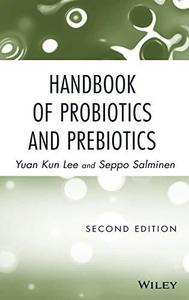
Handbook of Probiotics and Prebiotics By Yuan Kun Lee, Seppo Salminen (eds.)
2009 | 608 Pages | ISBN: 0470135441 | PDF | 5 MB
Since the publication of the first edition in 1999, the science of probiotics and prebiotics has matured greatly and garnered more interest. The first handbook on the market, Handbook of Probiotics and Prebiotics: Second Edition updates the data in its predecessor, and it also includes material topics not previously discussed in the first edition, including methods protocols, cell line and animal models, and coverage of prebiotics. The editors supplement their expertise by bringing in international experts to contribute chapters. This second edition brings together the information needed for the successful development of a pro- or prebiotic product from laboratory to market.Content: Chapter 1 Probiotic Microorganisms (pages 1-176): Yuan Kun Lee, Abelardo Margolles, Baltasar Mayo, Patricia Ruas?Madiedo, Miguel Gueimonde, Clara de los Reyes?Gavilan, Toni A Chapman, James JC Chin, Ross Crittenden, Diana Donohue and William Tien Hung ChangChapter 2 Selection and Maintenance of Probiotic Microorganisms (pages 177-187): Yuan Kun LeeChapter 3 Genetic Modification of Probiotic Microorganisms (pages 189-255): Koji Nomoto, Mayumi Kiwaki and Hirokazu TsujiChapter 4 Role of Probiotics in Health and Diseases (pages 257-375): M. Carmen Collado, J.M. Laparra, Rafael Frias, Yuan Kun Lee, Seppo Salminen, Allan Lim and Hai?Meng TanChapter 5 Mechanisms of Probiotics (pages 377-440): Sampo Lahtinen, Arthur Ouwehand, M. Carmen Collado, Seppo Salminen, Satu Vesterlund, Mimi Tang and Reetta SatokariChapter 6 Commercially Available Human Probiotic Microorganisms (pages 441-532): Camilla Hoppe, Charlotte Nexmann Larsen, Rangne Fonden, Ulla Svensson, Arthur Ouwehand, Sampo Lahtinen, Mayumi Kiwaki, Koji Nomoto, Katsunori Kimura, Dorte Eskesen, Maija Saxelin, Kajsa Kajander, Gregor Reid, Andrew W. Bruce, Paivi Nurminen, Riitta Korpela, Hirokazu Tsuji, Jin?Zhong Xiao and Seppo SalminenChapter 7 Prebiotics (pages 533-581): Ross Crittenden and Martin J. Playne
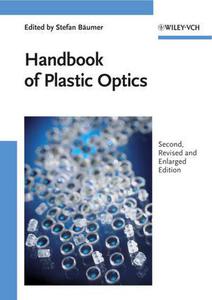
Handbook of Plastic Optics By Stefan Bäumer (ed.)
2010 | 303 Pages | ISBN: 3527409408 | PDF | 7 MB
A coherent overview of the current status of injection molded optics, describing in detail all aspects of plastic optics, from design issues to production technology and quality control. This updated second edition is supplemented by a chapter on the equipment and process of injection wells as well as a look at recent applications. The contributors, each one a leading expert in their discipline, have either a background in or strong ties to the industry, thus combining a large amount of practical experience. With its focus firmly set on practical applications, this is an indispensable reference for all those working in optics research and development.
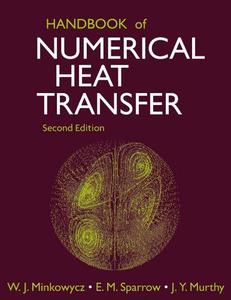
Handbook of Numerical Heat Transfer, Second Edition By
2006 | 963 Pages | ISBN: 0471348783 | PDF | 138 MB
A completely updated edition of the acclaimed single-volume reference for heat transfer and the thermal sciences This Second Edition of Handbook of Numerical Heat Transfer covers the basic equations for numerical method calculations regarding heat transfer problems and applies these to problems encountered in aerospace, nuclear power, chemical processes, electronic packaging, and other related areas of mechanical engineering. As with the first edition, this complete revision presents comprehensive but accessible coverage of the necessary formulations, numerical schemes, and innovative solution techniques for solving problems of heat and mass transfer and related fluid flows. Featuring contributions from some of the most prominent authorities in the field, articles are grouped by major sets of methods and functions, with the text describing new and improved, as well as standard, procedures. Handbook of Numerical Heat Transfer, Second Edition includes: * Updated coverage of parabolic systems, hyperbolic systems, integral-and integro-differential systems, Monte Carlo and perturbation methods, and inverse problems * Usable computer programs that allow quick applications to aerospace, chemical, nuclear, and electronic packaging industries * User-friendly nomenclature listings include all the symbols used in each chapter so that chapter-specific symbols are readily availableContent: Chapter 1 Survey of Numerical Methods (pages 1-51): J. Y. Murthy, W. J. Minkowycz, E. M. Sparrow and S. R. MathurChapter 2 Finite?Difference Method (pages 53-90): Richard H. PletcherChapter 3 Finite?Element Method (pages 91-123): Juan C. HeinrichChapter 4 Boundary?Element Method (pages 125-165): A. J. Kassab, L. C. Wrobel, R. A. Bialecki and E. A. DivoChapter 5 Large Eddy Simulation of Heat and Mass Transport in Turbulent Flows (pages 167-189): Cyrus K. Madnia, Farhad A. Jaberi and Peyman GiviChapter 6 Control?Volume?Based Finite?Difference and Finite?Element Methods (pages 191-224): B. R. Baliga and N. AtabakiChapter 7 Meshless Methods (pages 225-247): D. W. PepperChapter 8 Monte Carlo Methods (pages 249-295): A. Haji?Sheikh and J. R. HowellChapter 9 Discrete?Ordinates and Finite?Volume Methods for Radiative Heat Transfer (pages 297-323): J. C. Chai and S. V. PatankarChapter 10 Pressure?Based Algorithms for Single?Fluid and Multifluid Flows (pages 325-367): F. Moukalled and M. DarwishChapter 11 Numerical Modeling of Heat Transfer in Wall?Adjacent Turbulent Flows (pages 369-388): T. J. Craft, S. E. Gant, A. V. Gerasimov, H. Iacovides and B. E. LaunderChapter 12 A Critical Systhesis of Pertinent Models for Turbulent Transport through Porous Media (pages 389-416): K. Vafai, A. Bejan, W. J. Minkowycz and K. KhanaferChapter 13 Verification and Validation of Computational Heat Transfer (pages 417-442): Dominique Pelletier and Patrick J. RoacheChapter 14 Sensitivity Analysis and Uncertainty Propagation of Computational Models (pages 443-469): B. F. Blackwell and K. J. DowdingChapter 15 Computational Geometry, Grid Generation, and Adaptive Grids (pages 471-492): Graham F. CareyChapter 16 Hybrid Methods and Symbolic Computations (pages 493-522): Renato M. Cotta and Mikhail D. MikhailovChapter 17 Inverse Problems in Heat Transfer (pages 523-557): Nicholas ZabarasChapter 18 Moving?Boundary Problems (pages 559-592): Wei ShyyChapter 19 Numerical Methods for Phase?Change Problems (pages 593-622): V. R. VollerChapter 20 Computational Techniques for Microscale Heat Transfer (pages 623-657): Da Yu "Robert" Tzou and James C. DowellChapter 21 Molecular Dynamics Method for Micro/Nano Systems (pages 659-695): Shigeo MaruyamaChapter 22 Eulerian?Lagrangian Simulations of Particle/Droplet?Laden Turbulent Flows (pages 697-728): F. Mashayek and W. J. MinkowyczChapter 23 Numerical Modeling of Manufacturing Processes (pages 729-783): Yogesh JaluriaChapter 24 Computational Methods in Materials Processing (pages 785-819): R. PitchumaniChapter 25 Thermal Modeling of Technology Infrastructure Facilities: A Case Study of Data Centers (pages 821-849): J. Rambo and Y. JoshiChapter 26 Numerical Bioheat Transfer (pages 851-893): B. RubinskyChapter 27 High?Performance Computing for Fluid Flow and Heat Transfer (pages 895-920): D. W. Pepper and J. M. LombardoChapter 28 Overview of Numerical Methods and Recommendations (pages 921-945): S. R. Mathur, W. J. Minkowycz, E. M. Sparrow and J. Y. Murthy
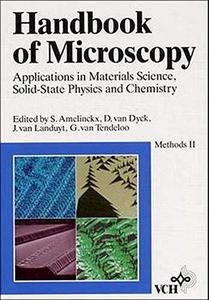
Handbook of Microscopy: Methods II: Applications in Materials Science, Solid-State Physics and Chemistry, Volume 2 By
1997 | 492 Pages | ISBN: 3527294732 | PDF | 30 MB
Comprehensive in coverage, written and edited by leading experts in the field, this Handbook is a definitive, up-to-date reference work. The Volumes Methods I and Methods II detail the physico-chemical basis and capabilities of the various microscopy techniques used in materials science. The Volume Applications illustrates the results obtained by all available methods for the main classes of materials, showing which technique can be successfully applied to a given material in order to obtain the desired information. With the Handbook of Microscopy, scientists and engineers involved in materials characterization will be in a position to answer two key questions: "How does a given technique work?", and "Which techique is suitable for characterizing a given material?" Content: Chapter 2.1 Scanning Electron Microscopy (pages 539-561): Chapter 2.2 Scanning Transmission Electron Microscopy (pages 563-594): Chapter 2.3 Scanning Transmission Electron Microscopy: Z Contrast (pages 595-620): Chapter 2.4 Scanning Auger Microscopy (SAM) and Imaging X?Ray Photoelectron Spectroscopy (XPS) (pages 621-640): Chapter 2.5 Scanning Microanalysis (pages 641-659): Chapter 2.6 Imaging Secondary Ion Mass Spectrometry (pages 691-716): Chapter 1 Nuclear Magnetic Resonance (pages 719-734): Chapter 2 Scanning Electron Microscopy with Polarization Analysis (SEMPA) (pages 735-749): Chapter 3 Spin?Polarized Low?Energy Electron Microscopy (pages 751-759): Chapter 1 Photoelectron Emission Microscopy (pages 763-773): Chapter 2 Field Emission and Field Ion Microscopy (Including Atom Probe FIM) (pages 775-801): Chapter 1 Scanning Tunneling Microscopy (pages 809-826): Chapter 2 Scanning Force Microscopy (pages 828-844): Chapter 3 Magnetic Force Microscopy (pages 845-853): Chapter 4 Ballistic Electron Emission Microscopy (pages 855-882): Chapter 1 Image Recording in Microscopy (pages 885-921): Chapter 2 Image Processing (pages 923-952): Chapter 1 Coincidence Microscopy (pages 955-962): Chapter 2 Low Energy Electron Holography and Point?Projection Microscopy (pages 963-986):
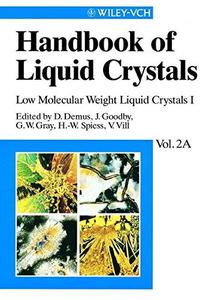
Handbook of Liquid Crystals: Low Molecular Weight Liquid Crystals I, Volume 2 A By Prof. D. Demus, Prof. J. Goodby, Prof. G. W. Gray, Prof. H.?W. Spiess, Dr. V. Vill(auth.)
1998 | 525 Pages | ISBN: 3527292713 | PDF | 20 MB
The Handbook of Liquid Crystals is a unique compendium of knowledge on all aspects of liquid crystals. In over 2000 pages the Handbook provides detailed information on the basic principles of both low- and high-molecular weight materials, as well as the synthesis, characterization, modification, and applications (such as in computer displays or as structural materials) of all types of liquid crystals. The five editors of the Handbook are internationally renowned experts from both industry and academia and have drawn together over 70 leading figures in the field as authors. The four volumes of the Handbook are designed both to be used together or as stand-alone reference sources. Some users will require the whole set, others will be best served with one or two of the volumes. Volume 1 deals with the basic physical and chemical principles of liquid crystals, including structure-property relationships, nomenclature, phase behavior, characterization methods, and general synthesis and application strategies. As such this volume provides an excellent introduction to the field and a powerful learning and teaching tool for graduate students and above. Volumes 2A and 2B concentrate on low-molecular weight materials, for example those typically used in display technology. A high quality survey of the literature is provided along with full details of molecular design strategies, phase characterization and control, and applications development. These volumes are therefore by far the most detailed reference sources on these industrially very important materials, ideally suited for professionals in the field. Volume 3 concentrates on high-molecular weight, or polymeric, liquid crystals, some of which are found in structural applications and others occur as natural products of living systems. A high-quality literature survey is complemented by full detail of the synthesis, processing, analysis, and applications of all important materials classes. This volume is the most comprehensive reference source on these materials, and is therefore ideally suited for professionals in the field. Content: Chapter I Phase Structures of Calamitic Liquid Crystals (pages 3-21): John W. GoodbyChapter II Phase Transitions in Rod?Like Liquid Crystals (pages 23-46): Daniel GuillonChapter III.1 Nematic Liquid Crystals: Synthesis of Nematic Liquid Crystals (pages 47-59): Kenneth J. ToyneChapter III.2.1 Nematic Liquid Crystals: Physical Properties, Section 2.1 (pages 60-90): Ralf StannariusChapter III.2.2 Nematic Liquid Crystals: Physical Properties, Section 2.2 (pages 91-112): Horst KresseChapter III.2.3 Nematic Liquid Crystals: Physical Properties, Section 2.3 (pages 113-127): Ralf StannariusChapter III.2.4 Nematic Liquid Crystals: Physical Properties, Section 2.4 (pages 128-141): Gerhard PelzlChapter III:2.5 Nematic Liquid Crystals: Physical Properties, Section 2.5 (pages 142-169): Herbert Kneppe and Frank SchneiderChapter III.2.6 Nematic Liquid Crystals: Physical Properties, Section 2.6 (pages 170-197): R. Blinc and I. MusevicChapter III.3.1 Nematic Liquid Crystals: Applications, Section 3.1 (pages 199-229): Harald Hirschmann and Volker ReiffenrathChapter III.3.2 Nematic Liquid Crystals: Applications, Section 3.2 (pages 230-242): Eiji KanekoChapter III.3.3 Nematic Liquid Crystals: Applications, Section 3.3 (pages 243-256): Birendra BahadurChapter III.3.4 Nematic Liquid Crystals: Applications, Section 3.4 (pages 257-302): Birendra BahadurChapter IV.1 Chiral Nematic Liquid Crystals: The Synthesis of Chiral Nematic Liquid Crystals (pages 303-334): Christopher J. BoothChapter IV.2 Chiral Nematic Liquid Crystals: Chiral Nematics: Physical Properties and Applications (pages 335-409): Harry ColesChapter V.1 Non?Chiral Smectic Liquid Crystals: Synthesis of Non?Chiral Smectic Liquid Crystals (pages 411-440): John W. GoodbyChapter V.2 Non?Chiral Smectic Liquid Crystals: Physical Properties of Non?Chiral Smectic Liquid Crystals (pages 441-469): C. C. HuangChapter V.3 Non?Chiral Smectic Liquid Crystals: Nonchiral Smectic Liquid Crystals - Applications (pages 470-490): David Coates


